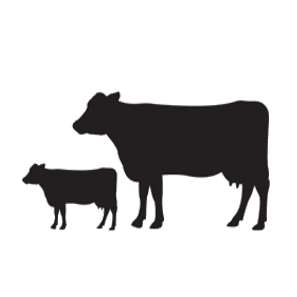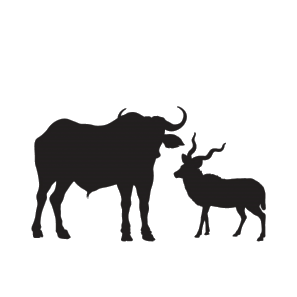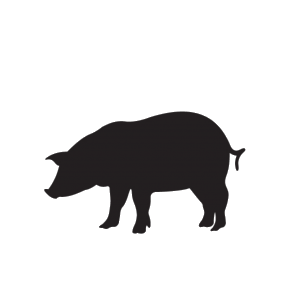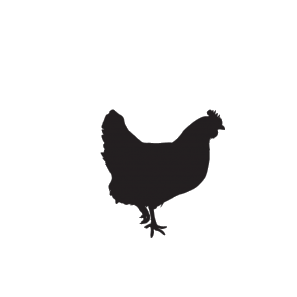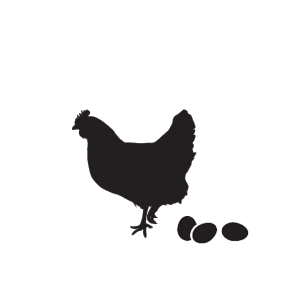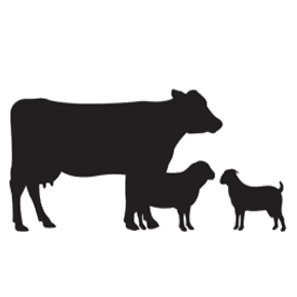Brett Roosendaal
Technical Executive Animal Feed
RCL FOODS, Animal Feed
Introduction
The daily protein requirement of the horse is a function of the endogenous nitrogen loss and the nitrogen deposition and secretion by the animal. Since the horse has only minimal ability to utilize non-protein nitrogen, most of the animals nitrogen needs must be provided in the form of protein or amino acids (AA). Like other animals, the horse has a need for specific quantities of essential amino acids (EAA) and a need for a pool of non-essential AA. The dietary protein requirement of the animal is a function of the AA needs of the animal. The AA composition of the dietary protein and the digestibility of that protein is what is used to satisfy the animal’s requirement.
The Concept
Twenty AA are the building blocks of proteins. Ten of them (Lysine, Threonine, Methionine, Tryptophan, Valine, Isoleucine, Leucine, Arginine, Histidine and Phenylalanine) are either not synthesized or synthesized only in small quantities by horses. They must therefore be supplied through the diet and are referred to as EAA. Feeds must provide the EAA in sufficient quantities to cover the requirements of animals, while avoiding an excess supply. The extent to which dietary crude protein (CP) can be reduced depends on the limiting AA in a diet and therefore on the requirement level that is set for each of the EAA.
The ideal AA profile (ideal protein) is a practical way in which to express EAA requirements. In this concept, the AA pattern (g of AA / 100 g lysine) that maximizes a performance criterion (growth, nitrogen retention…) is defined. In the ideal profile, all AA are considered to be equally limiting for performance. In practical nutrition, this offers the advantage that while the lysine requirement varies (per kg of feed or per unit of energy) the ideal AA profile expressed relative to lysine remains the same. The ideal AA profile infers that lysine is the first limiting AA and threonine second in grass based feeding systems (Ott, 2001). There is little or no data on the horse’s requirements or availability of other EAA. This presents a special challenge when formulating diets since the AA composition of typical feed ingredients used in horse feed varies considerably.
Dietary protein use in the equine industry
The amount of protein in horse feeds is often used as a marketing tool with the protein percentage being part of the name of the feed, for example Race 13 (Capstone, 2016). Through this marketing the perception is created that more protein is advantageous for horses. The equine industry has a history of overfeeding protein, equine rations in the Chesapeake Bay area provided 157+-21.6% of the NRC (2007) requirement for crude protein (Harper et al., 2009). Data on overfeeding of protein in South Africa are not available. Overfeeding protein to horses causes increased water consumption, increased ammonia production and disrupted acid-base balance which may all decrease athletic performance (Tanner, 2014).
Protein requirements for horses
Globally there are several different systems to express protein requirements for horses in different physiological states, including crude protein (NRC, 2007), horse digestible crude protein (Martin-Rosset and Tisserand, 2004), apparent digestible crude protein (Ellis, 2004) and pre-cecally digested protein (Coenen et al., 2011). The latter authors have tried to take the digestibility into account, however, the adjusted values are ultimately linked to the crude protein content of the feed. Crude protein in whichever form, as defined by the nitrogen content multiplied by the conventional conversion factor 6.25 (assuming 16% nitrogen) has limited nutritional relevance. The lysine requirement for horses for maintenance have been established and more recently threonine requirements have been evaluated with little success (Mok, 2015; Smith, 2016).
Lysine Requirements as per NRC (2007)
The lysine requirement for maintenance has been based on the average lysine content in most protein sources fed to horses. Using the means from studies (n = 7) that reported diet composition, intake and N retention, linear regression was applied and resulted in an intake of 36 mg lysine/kg BW/d for zero N retention, representing a minimum need for lysine at maintenance. Broken-line analysis identified a plateau in N retention for maintenance horses at an intake of 54 mg Lysine/kg BW/d. The equation to calculate the minimum lysine requirement for lysine would be BW x 36 mg/kg BW/d, while the optimum could be calculated with the equation: BW x 54 mg/kg BW/d. This equates to a minimum of 18 g lysine per day and an optimum of 27 g lysine per day for a 500 kg horse.
With a CP requirement of 630 g for a 500 kg horse, the lysine requirement of 27 g/d is equal to 4.3% of the CP requirement. Therefore, the requirement for lysine for horses in minimal and elevated maintenance can be calculated by multiplying the CP requirement by 4.3%. It should be noted that the quality of the proteinaceous raw material used will have an effect on this figure. The lysine requirement for horses in maintenance can be calculated as follows:
Lysine (g/d) = CP requirement x 4.3 percent
The CP requirement recommended for maintenance is determined at the point of zero balance of N, where N accretion and loss occur at the same rate. Measuring true nitrogen loss is susceptible to underestimation because minor losses such as hair, skin and sweat (1.0 to 1.5 g N/kg) are difficult to quantify. Therefore, when calculating CP requirements by nitrogen balance trials, allow for some compensation for making N retention greater than zero.
The CP requirement for horses in average maintenance is 1.26 g/kg BW/d. Applying a 95% confidence interval, the minimum is calculated at 1.08 and the maximum at 1.44 g/kg BW/d. The CP requirements for maintenance in growing horses, pregnant mares, lactating mares and exercising horses is in the same range of the requirement for mature horses at maintenance. Table 1 shows the maintenance requirement for horses at various physiological states. CP required for deposition of fetal tissue, milk production or exercise are given in Table 2 and should be added to the maintenance requirement when calculating requirements.
| Table 1. Maintenance CP requirements in horses at various physiological states, g/kg BW/d | ||||||
| Maintenance | Growth | Pregnancy | Lactation | Exercise | ||
| 1.44 | 1.26 | 1.44 | ||||
| 1.08 | Minimum | 1.08 | Minimum | |||
| 1.26 | Average | 1.26 | Average | |||
| 1.44 | Elevated | 1.44 | Elevated | |||
| Table 2. Additional CP requirements in horses at various physiological states, g/kg BW/d | ||
| Additional CP requirements | ||
| Growth | (Average daily gain kg x 0.20)/Ea)/0.79 g CP/d | |
| Pregnancy | (Fetal gain kg/0.5)/0.79 g/d | |
| Lactation | Milk production kg/d x 50 g CP/kg milk | |
| Exercise | Light | BW x 89 mg CP/kg BW/d |
| Moderate | BW x 177 mg CP/kg BW/d | |
| Heavy | BW x 266 mg CP/kg BW/d | |
| Very heavy | BW x 354 mg CP/kg BW/d | |
| Ea = efficiency of use of dietary CP; 50% for horses 4-6 months of age, 45% for | ||
| horses 7 and 8 months of age, 40% for horses 9 and 10 months of age, 35% for | ||
| horses 11 months of age and 30% for 12 months of age and older | ||
Threonine Requirement
Graham et al., (1994) supplemented yearlings with either lysine or lysine and threonine and based on girth gain concluded that threonine was second limiting after lysine. Graham-Thiers and Kronfeld (2005a) supplemented adult horses with 15 g/d threonine and 20 g/d lysine. The supplementation increased subjective muscle scores and decreased plasma urea nitrogen. In a recent study, weaning horses were fed a diet which met the crude protein recommendations and was top-dressed with either crystalline threonine or crystalline glutamate in equimolar concentrations (Mastellar et al., 2016b). The authors did not observe any effect of treatment on plasma urea N concentrations or the rate of whole body protein synthesis estimated using the indicator AA oxidation method and concluded that threonine was not limiting protein synthesis in the trial.
Methionine Requirement
Winsco et al., (2011) supplemented weanlings with methionine (total methionine intake of 54 mg/kg BW/d) to a basal diet providing methionine at 42 mg/kg BW/d with no effect on nitrogen balance or growth.
Ideal Protein
Ideal protein is defined as a protein that includes the minimum quantity of each EAA compatible with maximum utilization of the protein as a whole. The estimation of ideal protein in swine is based on results from experiments involving removal of a single AA at a time from a casein diet and measuring N balance. There is also the assumption that ideal protein would closely resemble the AA profile of the likely end product of AA use in the body, largely muscle tissue. Muscle is a popular proxy because it makes up 53% of the live weight of Thoroughbreds and 44% of live weight in other horse breeds (Gunn, 1987). Table 3 gives the AA ratio’s based on equine muscle tissue. This table can be used to estimate the other EAA relative to lysine for the different physiological states.
| Table 3. AA requirement estimate ratio’s based on AA composition of equine muscle (after Tanner, 2014) | ||||
| Requirement estimates based on muscle | ||||
| Gluteal (Bryden, 1991) | Gluteus and Gastrocnemius (Wickens et al., 2002) | “Thigh” (Badiani et al., 1997) | Average of muscles (Lorenzo and Pateiro, 2013) | |
| Lysine | 100 | 100 | 100 | 100 |
| Methionine | 29 | 32 | 31 | 16 |
| Threonine | 62 | 51 | 54 | 57 |
| Valine | 63 | 59 | 61 | 57 |
| Isoleucine | 56 | 58 | 58 | 56 |
| Arginine | 74 | 75 | 74 | 62 |
| Leucine | 109 | 95 | 97 | 94 |
| Histidine | 65 | 75 | 57 | 48 |
| Phenylalanine | 60 | 47 | 52 | 48 |
Milk can be used in addition to body composition in the factorial method to estimate amino acid requirements for lactating mares (Wickens et al., 2002). Milk AA composition can be used to estimate the AA requirements of growing horses as milk is the only nutrition foals receive first (Table 4).
The approach suggested above to determine the AA requirements of horses must be used with caution as estimating requirements where muscle and milk compositions may not be reflective of whole body protein content or whole body use of that AA, for example threonine which together with serine makes-up 20 to 55% of mucin.
| Table 4. AA requirement estimate ratio’s based on AA composition of equine milk (after Tanner, 2014) | |||||
| Requirement estimates based on milk | |||||
| (Bryden, 1991) | (Wickens et al., 2002) | Intermediate milk (Davis et al., 1994b) | Mature milk (Davis et al., 1994a) | Late Lactation milk (Tanner et al., 2011) | |
| Lysine | 100 | 100 | 100 | 100 | 100 |
| Methionine | 30 | 32 | 29 | 30 | 26 |
| Threonine | 53 | 72 | 46 | 53 | 45 |
| Valine | 77 | 97 | 60 | 64 | 98 |
| Isoleucine | 64 | 78 | 53 | 53 | 75 |
| Arginine | 79 | 69 | 73 | 82 | 68 |
| Leucine | 129 | 147 | 121 | 127 | 133 |
| Histidine | 36 | 33 | 29 | 29 | 30 |
| Phenylalanine | 56 | 53 | 58 | 59 | 53 |
It is recognized, due to the lack of data and knowledge on feed ingredient digestibility, that the use of CP and AA requirements are only expressed on a total basis. Creating a repository of CP digestibility values of common feed ingredients fed to horses will allow for formulation to be based on digestible rather than total CP basis.
Crude Protein digestibility
Forage protein digestibility depends on the relative proportion of the cell content fractions (lipids, non–
structural carbohydrates, pectin, starch, non–protein nitrogenous compounds, and soluble proteins) and of the cell wall constituents (fiber-bound protein, cellulose, hemicelluloses, lignin and lignified nitrogenous compounds). In hindgut fermenters and ruminant animals, cell protein components are considered highly digestible, fiber-bound proteins are only partially digestible on fermentation, and lignified nitrogenous compounds are completely indigestible (Van Soest, 1965, 1967). Differences in apparent N digestibility between grass and legume hays are related to the differences in fiber composition in horses (Glade, 1984). Digestibility of the cellulose component of fiber is directly related to lignification, which in turn decreases plant cell wall protein digestibility, hemicellulose is also associated with lignin content and is considered a limiting factor to fiber digestibility in horses (Van Soest, 1994). Consequently, the low hemicellulose of legumes compared to high hemicellulose of grass hay is likely an important contributing factor to the greater whole tract apparent N digestibility of legume compared to grass hays.
Muscato et al. (1983) examined the AA profile of timothy grass hay fiber components and found over 65% of the total plant AA was within the neutral detergent insoluble N fraction. Thus, while over half of the amino-N in timothy hay is likely available to the large intestinal microflora of hindgut fermenters, in vivo utilization of this AA pool remains unknown.
Grass forages range from the lowest apparent N digestibility of 32% in bermuda grass (Fonnesbeck et al., 1967) to the highest apparent N digestibility of 68% in orchardgrass (Darlington and Hershberger, 1968). Estimates of whole tract apparent N digestibility range widely, even within species. For instance, timothy grass hay ranged from 36% (Cuddeford et al., 1992) to 65% (Darlington and Hershberger, 1968), tall fescue from 38% (Fonnesbeck et al., 1967) to 67% (Crozier et al., 1997), reed canarygrass from 48% to 67% (Ordakowski-Burk et al., 2006), and orchardgrass from 40% (Takagi et al., 2003) to 68% (Darlington and Hershberger, 1968). Notable differences in whole tract apparent N digestibility were also found within legume species, alfalfa hay fed to equids ranged from 55% (Darlington and Hershberger, 1968) to 81% (Potts et al., 2009). Fonnesbeck et al. (1967) reported whole tract apparent N digestibility of 65% in first cutting alfalfa, whereas Darlington and Hershberger (1968) reported whole tract apparent N digestibility of 55% in mature alfalfa. In less mature alfalfa, Darlington and Hershberger (1968) reported whole tract apparent N digestibility values of 72% and 75% for mid-mature and immature alfalfa, respectively.
Estimates of apparent N digestibility of cereal grains are not as readily available for equids compared to other non–ruminant livestock. The addition of grain improves the whole tract apparent N digestibility when fed with low-protein forages, such as straw, from 50% to 66% (Kienzle et al., (2002). Whole oats is a common grain used in many mixed equine diets because they are readily digestible and palatable (Särkijärvi and Saastamoinen, 2006). Palmgren Karlsson et al. (2000) reported a 9% and 18% increase in whole tract apparent N digestibility when oats were provided in addition to timothy grass hay at 0.3% and 0.6% BW, respectively. It was suggested that the increase in whole tract apparent N digestibility of timothy with the inclusion of oats may be due, in part, to starch stimulation of microbial protein synthesis, in turn enhancing fiber digestibility Palmgren Karlsson et al. (2000). Due to cereal grains not being fed as a single feed ingredient in equids, measurement of cereal grain digestibility entails the use of alternative approaches. Takagi et al. (2003) measured apparent N digestibility in a variety of cereal grains and oil seed meals using the difference in digestibility between a basal diet containing the test ingredient and basal diet fed without the test ingredient. Woodward et al. (2010b) used the substitution approach with oat grain and timothy hay as substitutive ingredients and determined apparent N digestibility value of 67% for oats and 52% for timothy hay.
Proteins that are digested in the foregut are potentially available to the horse to contribute to the amino acid pool in the body, whereas those that pass to the hindgut are not (NRC, 2007). mRNA data supports the theory that most of the amino acid absorption in the horse takes place in the jejunum, however, there may be some absorption from the large intestine (Woodward et al., 2010a). The apparent total tract digestibility does not tell the complete story as it is accepted that the hindgut does not provide substantial amounts of amino acids (Coenen et al. 2011).
Evaluation of Protein and Amino Acids with respect to Absorption in the Small Intestine
Ileal digestibility’s of AA separate the host from that of the microbial population and in the case of the horse separate the disappearance of AA from the hindgut. Several studies of ileal cannulated horses measured protein digestibility’s, but AA concentrations in the feed and digesta were not measured (Farley et al., 1995; Gibbs et al., 1996; Rosenfeld and Austbø, 2009b). Almeida et al., (1999) investigated ileal digestibility in horses using five different CP levels in a 50:50 concentrate to Cynodon dactylon hay ratio. Apparent ileal digestibility’s ranged from 52 – 69% for lysine and 32 – 62% for threonine with increasing CP intake. Comparative analysis with ileal digestibility data from pigs is not possible due to multiple raw materials used in the study.
Zeyner et al. (2015) proposed a system for protein evaluation that uses the common structure in feed analysis and provides the option to describe the AA which are available from the absorption in the small intestine. The problem is that only two studies (Almeida et al., 1998 and Coleman et al., 2001) that provide information on the small intestinal digestibility of AA. However, the database on small intestinal digestibility of CP and AA do not enable to establish a protein evaluation based on experimental data for small intestinal digestible CP or AA for a list of individual feedstuffs. The “Cornell Net Carbohydrate and Protein System” for cattle uses two CP fractions (a) neutral detergent (ND) insoluble CP (NDICP) and (b) ND soluble CP (NDSCP). These fractions represent the cell wall protein and the intracellular protein. The idea behind this fractionation is that CP bound in ND fiber cannot be broken down by auto-enzymatic digestion, whereas the soluble protein may be digested by enzymes in the small intestine. AA profiles of both protein fractions seem to be similar within a given feed (Rebolé et al., 2001 and Tedeschi et al., 2001). Thus, the NDSCP/NDICP schedule can be transferred to AA. Literature data in horses show that the amount of ingested NDICP is correlated with the experimentally
determined amount of small intestinal undigested protein (R2= 0.69). The slope of the linear regression line between NDICP and pre-caecal digestible CP was 0.9, suggesting an apparent pre-caecal digestibility of NDSCP of 90%. Thus pre-caecal digestible CP may be predicted by multiplying NDSCP by 0.9. This clearly shows that NDSCP can be used to estimate the part of CP that is available for auto-enzymatic digestion. Due to the equal distribution of AA profiles in NDSCP and NDICP, the proposed concept can even be expanded to the individual AA’s. The proposed system fits well with assumptions on AA requirements, particularly with regard to growth and lactation, however, the AA requirements for maintenance are still not well defined. The total tract protein digestibility is misleading as described earlier; the benefit of the presented concept is the analytical access to that fraction of protein and AA that feeds the body’s AA pool, however, there are not many data obtained experimentally with fistulated horses. The above system paves the way for obtaining/deriving individual AA digestibility values.
The amount of protein that is digested in the foregut greatly influences the AA availability to the animal. Thus feeding programs that provide protein in the form that is readily digested in the foregut will have higher value to the animal than those programs where considerable portion of the protein is digested in the hindgut. This may be especially true for combinations of forage and concentrate. If the concentrate provides sources of highly digestible protein, the AA digestibility will be considerably higher than the forage portion of the diet. Farley et al. (1995) have demonstrated that for semi-purified diets providing 5, 9.5, 14 and 16.5% CP where soyabean meal provided all of the supplemental protein, the apparent digestibility’s were 62.9, 78.8, 85.8 and 87.4% and the true digestion was 72%.
Proposed Ideal Protein Profile
Given the lack of research and data pertaining to EAA for horses and taking the information in Tables 3 and 4 into account as well as using pig modelling data, Table 5 is a proposed ideal protein profile for diets fed to horses. The current table values are given on a total basis, however, can also be applied to the digestible AA values alluded to in the previous paragraph.
The proposal for lysine for maintenance is based on the NRC (2007) value of 4.3 % of the CP. This value, however, must be increased by a percentage above maintenance for the different physiological states and is used here for illustration purposes only and is only relevant to the adult horse at rest. When formulating these diets with common raw materials used in feed production, lysine, methionine and threonine are the only limiting AA’s in the diets. The other AA’s are in excess of what is given in the table.
| Table 5. Proposed Specifications and Ideal Protein Profile for Horse concentrates | |||||||||||
| FOAL | YEARLING | ADULT | WORKING | LACTATING | |||||||
| <6 Months | 12 to 24 Months | ||||||||||
| PROTEIN | % | 18 | 16 | 12 | 13 | 14 | |||||
| LYSINE | % | 0.77 | 100 | 0.69 | 100 | 0.52 | 100 | 0.56 | 100 | 0.60 | 100 |
| METHIONINE | % | 0.27 | 35 | 0.24 | 35 | 0.15 | 30 | 0.19 | 35 | 0.18 | 30 |
| THREONINE | % | 0.50 | 65 | 0.45 | 65 | 0.31 | 60 | 0.37 | 65 | 0.39 | 65 |
| TRYPTOPHAN | % | 0.17 | 22 | 0.15 | 22 | 0.09 | 18 | 0.11 | 20 | 0.11 | 18 |
| VALINE | % | 0.54 | 70 | 0.48 | 70 | 0.34 | 65 | 0.36 | 65 | 0.39 | 65 |
| ISOLEUCINE | % | 0.46 | 60 | 0.41 | 60 | 0.31 | 60 | 0.34 | 60 | 0.36 | 60 |
| LEUCINE | % | 0.77 | 100 | 0.69 | 100 | 0.52 | 100 | 0.56 | 100 | 0.60 | 100 |
| HISTIDINE | % | 0.25 | 32 | 0.22 | 32 | 0.17 | 32 | 0.18 | 32 | 0.19 | 32 |
| PHE+TRY | % | 0.74 | 95 | 0.65 | 95 | 0.49 | 95 | 0.53 | 95 | 0.57 | 95 |
| ARGININE | % | 0.33 | 70 | 0.29 | 75 | 0.22 | 75 | 0.23 | 75 | 0.25 | 75 |
An additional benefit when using this approach is to lower the CP content of the diet while satisfying the EAA requirement and not compromising the objective be it growth, performance etc. Caution needs to be taken to supply enough AA to the diet so that there is enough amine groups in the AA metabolic pool to assist with synthesis of non-EAA.
Graham-Thiers et al. (1999) compared a 7.5% CP diet with added lysine and threonine to a 14.4% CP diet for working horses. The low protein diet seemed to have little or no adverse effect on the physiological factors related to energy or protein metabolism, suggesting that the amino acid supplemented low protein diet was adequate to meet the needs of the animals. High protein intakes appear to have little effect on the metabolism of the working horse. The extra amino acids are apparently de-aminated as blood urea-N was higher in the animals receiving the high protein diet but blood ammonia levels were not affected. Blood lactate levels were depressed by the high protein diet suggesting that the high protein diet depressed glycogen availability or that glycogen was spared by the availability of AA that were used directly in energy metabolism. Blood alanine was lower in the horses on the high protein diet.
AA are known to play an important role in energy metabolism in working muscle. The branched chain AA leucine, isoleucine and valine provide a source of energy that should reduce lactic acid production during strenuous work. Glade (1989) demonstrated that the administration of 25 grams of a mixture of leucine, isoleucine, valine, glutamine and carnitine in the ratio of 7:5:5:0.2:0.1 before and after strenuous exercise for 9 weeks resulted in a measurable decrease in plasma lactate (P<0.05) and decreased heart rate for horses doing treadmill work. Horses exercised to fatigue were shown to have a small increase in muscle leucine (P<0.05) and lysine (P<0.05), a larger increase in alanine (P<0.001) and a decrease in glutamate (p<0.001) (Miller-Graber et al., 1990). Glutamate plays a key role in intermediary metabolism by providing alpha-ketoglutarate for tricarboxylic acid cycle and it can be transaminated to alanine. Alanine can be transported to the liver where it is converted to pyruvate and ultimately glucose. It is therefore likely that as animals approach fatigue, amino acids may play a role in meeting substrate needs (Ott, 2001).
The availability of feed use AA such as L-lysine, DL methionine, L-threonine, L-trytophan and L-valine allow a reduction in CP content of animal feeds, while maintaining the supply of EAA. Such diets markedly reduce N excretion, without detrimental effects on N retention or growth performance in animals. Low protein diets are also associated with reductions in energy losses. Lowering dietary CP reduces deamination of excess AA and the consequent synthesis and excretion or urea in urine, lowers body protein turnover and heat production of animals. Reducing dietary CP therefore increases the energy available for tissue deposition. In addition to better feed efficiency and a reduction in N output, moving from a formulation based on (minimum) CP to a formulation based on each EAA gives much more flexibility in the choice of feedstuffs, a better optimization of the formula and a reduction of the feed cost. The successful implementation of this approach requires that estimates be made for minimum requirements of each of the EAA for horses and these minimum requirements are used in feed formulation.
Conclusion
It is evident from the data herein that the protein requirement of the horse is influenced by how well the protein provides for the AA needs of the animal. It appears that lysine, threonine and methionine and cysteine are limiting AA in equine-based feeding programs. Feed formulation is based on the optimization of nutritional constraints. Each nutrient value for each feedstuff is in itself the result of numerous decisions and evaluations (estimation of the total content, estimation of digestibility, variability of the analyses, variability in the horse population etc.). The making of a decision on a nutritional parameter is therefore made under the concept of risk management. As CP is the result of a multiplication of N and a somewhat arbitrary coefficient (6.25), AA and more particularly EAA should be used to express the requirements or more specifically the dose-response curves for the different physiological stages of the horse. The ideal AA concept is proposed where optimum EAA supply is described in terms of ratio’s to lysine. The advantage of this approach includes a 1) more accurate formulation to meet the horses AA requirements, 2) lower CP content for those horsemen concerned about high protein diets, 3) economic advantage, 4) lower N excretion and less N load on the environment and 5) better feed efficiency.
References
Almeida, F.C., S.C. Valadares Filho, A.C. Queiroz, M.I. Leão, J.F.C. Silva and P.R Cecon. 1998. Digestibilidade aparente e verdadeira pré-cecal e total da proteína em dietas com diferentes níveis protéicos em eqϋinos. R. Bras. Zootec. 27: 521-529.
Almeida, F.Q., S.C. Valdares Filho, J.L. Donzele, J.F. Coelho da Silva, A.C. Queiroz, and P.R. Cecon. 1999. Prececal digestibility of amino acids in diets for horses. Proceedings of the 16th Equine Nutr. Phy. Sym., Raleigh, NC p 274-279.
Badiani, A.N., N. Nanni, P. Gatta, B. Tolomelli, and M. Manfredini. 1997. Nutrient profile of horsemeat. Journal of Food Composition and Analysis 10: 254.
Bryden, W.L. 1991. Amino acid requirements of horses estimated from tissue composition. Proceedings of the Nutrition Society of Australia 16: p 53.
Capstone. 2016. Race 13. https://www.capstone.co.za
Coenen, M., E. Kienzle, I. Vervuert, and A. Zeyner. 2011. Recent German system for digestible protein. Recent German developments in the formulation of energy and nutrient requirements in horses and the resulting feeding recommendations. Journal of Equine Veterinary Science 31: 219-229.
Coleman, R.J., G.W. Mathison, R.T. Hardin and J.G. Milligan. 2001. Effect of dietary forage and protein concentration on total tract, prececal and post-ileal protein and lysine digestibilities of forage based diets fed to mature ponies. In: Equine Nutrition and Physiology Symposium: Lexington, Kentucky.
Crozier, I., V. Allen, N. Jack, I. Fontenot, M. and M. Cochran. 1997. Digestibility, apparent mineral absorption, and voluntary intake by horses fed alfalfa, tall fescue, and Caucasian bluestem. Journal of Animal Science 75: 1651-1658.
Cuddeford, D., A. Woodhead and R. Muirhead. 1992. A comparison between the nutritive value of short cutting cycle, high temperature-dried alfalfa and timothy hay for horses. Equine Veterinary Journal 24: 84-89.
Darlington, L. and T. Hershberger. 1968. Effect of forage maturity on digestibility, intake and nutritive value of alfalfa, timothy and orchardgrass by equine. Journal of Animal Science 27: 1572-1506.
Davis, T.A., H.V. Nguyen, R. Garcia-Bravo, M.L. Fiorotto, E.M. Jackson, D.S. Lewis, D.R. Lee, and P.J. Reeds. 1994a. Amino acid composition of human milk is not unique. Journal of Nutrition 124: 1126-1132.
Davis, T.A., H.V. Nguyen, R. Garcia-Bravo, M.L. Fiorotto, E.M. Jackson, and P.J. Reeds. 1994b. Amino acid composition of the milk of some mammalian species changes with stage of lactation. British Journal of Nutrition 72: 845-853.
Ellis, A.D. 2004. The Dutch net protein system. In: V. Juliand and W. Martin-Rosset (eds.) Nutrition of the Performance Horse: Which system in Europe for evaluating the nutritional requirements? N0. EAAP publication No. 111. p 141-142. Wageningen Academic Publishers, The Netherlands.
Farley, E.B., G.D. Potter, P.G. Gibbs, J. Schumacher, and M. Murray-Gerzik. 1995. Digestion of soyabean meal protein in the equine small and large intestine at various levels of intake. Journal of Equine Veterinary Science 15: 391-397.
Fonnesbeck, P., R. Lydman, G. Vander Noot and L. Symonds. 1967. Digestibility of the proximate nutrients of forage by horses. Jounal of Animal Science 26: 1039-1045.
Gibbs, P.G., G.D. Potter, G.T. Schelling, J.L Kreider, and C.L. Boyd. 1996. The significance of small vs large intestinal digestion of cereal grain and oilseed protein in the equine. Journal of Equine Veterinary Science 16: 60-65.
Glade, M.J. 1984. The influence of dietary fibre digestibility on the nitrogen requirements of mature horses. Journal of Animal Science 58: 638-646.
Glade, M.J. 1989. Effects of specific amino acid supplementation on lactic acid production by horses exercised on a treadmill. 11th Equine Nutr. Phy. Sym., Oklahoma State U. p 244-251.
Graham, P.M.., E.A. Ott, J.H. Brendemuhl, and S.H. TenBroek. 1994. The effect of supplemental lysine and threonine on growth and development of yearling horses. Journal of Animal Science 72: 380-386.
Graham-Thiers, P.M., and D.S. Kronfeld. 2005a. Amino acid supplementation improves muscle mass in aged and young horses. Journal of Animal Science 83: 2783-2788.
Graham-Thiers, P.M., D.S. Kronfeld, K.A. Kline, T.M. McCullough, and P.A. Harris. 1999. Dietary protein level and protein status during exercise, training and stall rest. 16th Equine Nutr. Phy. Sym., Raleigh, NC p. 104-105
Gunn, H.M. 1987. Muscle, bone and fat proportions and muscle distribution of Thoroughbreds and other horses. In: J.R. Gillespie and N.E. Robinson (eds.) Equine Exercise Physiology. p 253-264. ICEEP Publications, Davis CA.
Harper, M., A. Swinker, W. Staniar, and A. Welker. 2009. Ration evaluation of Chesapeake Bat watershed horse farms from a nutrient management perspective. Journal of Veterinary Science 29: 519-520.
Kienzle, E., S. Faherie, and B. Opitz. 2002. Interactions between the apparent energy and nutrient digestibilities of a concentrate mixture and roughages in horses. Journal of Nutrition 132: 1778S-1780S.
Lorenzo, J.M., and M. Pateiro. 2013. Influence of type of muscles on nutritional value of foal meat. Meat Science 93: 630-638.
Martin-Rosset, W., and J.L. Tisserand. 2004. Evaluation and expression of protein allowances and protein value of feeds in the MADC system for the performance horse. In: V. Juliand and W. Martin-Rosset (eds.) Nutrition of the Performance Horse: Which system in Europe for evaluating the nutritional requirements? N0. EAAP publication No. 111. p 103-140. Wageningen Academic Publishers, The Netherlands.
Mastellar, S.L., A. Moffet, P.A. Harris, and K.L. Urschel. 2016b. Effects of threonine supplementation on whole body protein synthesis and plasma metabolites in growing and mature horses. Veterinary Journal 207: 147-153.
Miller-Graber, P.A., L.M. Lawrence, E. Kurcz, R. Kane, K. Bump, M. Fisher, and J. Smith. 1990. The free amino acid profile in the middle gluteal before and after fatiguing exercise in the horse. Equine Veterinary Journal22: 209-210.
Mok, C. 2015. Using the indicator amino acid oxidation technique to study threonine requirements in horses fed different feed compositions. Master of Science dissertation, University of Kentucky.
Muscato, T., C. Sniffen, U. Krishnamoorthy, and P. Van Soest. 1983. Amino acid content of noncell and cell wall fractions in feedstuffs. Journal of Dairy Science 66: 2189-2207.
NRC. 2007. Nutrient Requirements of Horses. National Academy Press, Washington DC.
Ordakowski-Burk, A.L., R.W. Quinn, T.A. Shellem and L.R. Vough. 2006. Voluntary intake and digestibility of reed canarygrass and timothy hay fed to horses. Journal of Animal Science 84: 3104-3109.
Ott, E.A. 2001. Protein and amino acids. Advances in Equine Nutrition II: 237-244.
Palmgren Karlsson, C., J. Lindberg, and M. Rundgren. 2000. Associative effects on total tract digestibility in horses fed different ratios of grass hay and whole oats. Livestock Production Science 65: 143-153.
Potts, l., J. Hinkson, J. Graham, C. Loest, and J. Turner. 2009. Nitrogen retention and nutrient digestibility in geldings fed grass or alfalfa hay or alfalfa cubes. Equine Veterinary Journal Supplement 29: 487-488.
Rebolé, A., J. Treviňo, R. Caballero and C. Alzueta. 2001. Effect of maturity on the amino acid profiles of total and nitrogen fractions in common vetch forage. Journal of Science Food and Agriculture 81: 455-461.
Rosenfeld, I., and D. Austbø. 2009a. Digestion of cereals in the equine gastrointestinal tract measured by the mobile bag technique on caecally cannulated horses. Animal Feed Science and Technology 150: 249-258.
Särkijärvi, S. and M. Saastamoinen. 2006. Feeding value of various processed oat grains in equine diets. Livestock Science 100: 3-9.
Smith, K.M. 2016. Towards determination of the threonine requirements of yearling horses fed varying dietary compositions using indicator amino acid oxidation method. Master of Science dissertation, University of Kentucky.
Tanner, S.L. 2014. Evaluating dietary amino acid adequacy in horses using isotopic techniques. Doctoral dissertation, University of Kentucky.
Tanner, S.L., A.L. Wagner, R.B. Ennis, and Urschel. 2011. Amino acid concentrations in late lactation mares’ milk. Journal of Equine Veterinary Science 31: 267-268.
Takagi, H., Y. Hashhimoto, C. Yonemochi, T. Ishibashi, Y. Asai and R. Watanabe. 2003. Digestibility of cereals, oil meals, brans and hays in Thoroughbreds. Journal of Equine Science 14: 119-124.
Tedeschi, L.O., A.N. Pell, D.G. Fox and C.R. Llames. 2001. The amino acid profiles of the whole plant and of four plant residues from temperate and tropical forages. Journal of Animal Science 79: 525-532.
Van Soest, P. 1967. Development of a comprehensive system of feed analyses and its application to forages. Journal of Animal Science 26: 119-128.
Van Soest, P. 1994. Nutritional ecology of the ruminant. Ithaca. New York: Cornell University Press.
Wickens, C.L., P.K. Ku, and N.L. Trottier. 2002. An ideal protein for the lactating mare. Journal of Animal Science 80: p 155
Winsco, K.N., J.A. Coverdale, T.A. Wickersham, and J.L. Shelton. 2011. Influence of dietary methionine concentration on growth and nitrogen balance in weanling Quarter Horses. Journal of Animal Science 89: 2123-2138.
Woodward, A.D., J.P. Steibel, C. Colvin, N.L. Trottier, S.J. Holcombe, and W.B. Staniar. 2010a. Cationic and neutral amino acid transporter transcript abundances are differentially expressed in the equine intestinal tract. Journal of Animal Science 88: 1028-1033.
Woodward, A.D., A. Willyyard, A. Buckley, J. Liesman, C.F. de Lange, and N.L. Trottier. 2010b. Digestibility of Oats in horses using the substitution approach. Journal of Animal Science 88(E-Supplement 2): 202
Zeyner, A., S. Kirchhof, A. Susenbeth, K.-H. Sϋdekum and E. Kienzle. 2015. A new protein evaluation system for horse feed from literature data. Journal of Nutritional Science 4 e4: 1-3




